London is dichotomy at its apex. Stately homes lead to cozy mews. Indian eateries sit next to greasy spoons. The trench-coated Chelsea set share tube rides with nose-spiked Camden Town goths. The drama of the royals outshocks soap-opera plotlines. The city’s contradictions are what keep this nearly 2,000-year-old grande dame as exciting as ever. During 18 months of lockdowns and restrictions, Londoners remained calm and carried on with enterprising ingenuity, and now the city is in the middle of a creative boom: refugees opening in-demand restaurants, West End shows rewriting fairy tales, multiethnic creatives shaking up the fashion scene. London doubles down on its differences, and the city is far richer for it. Come revel in the incongruity.
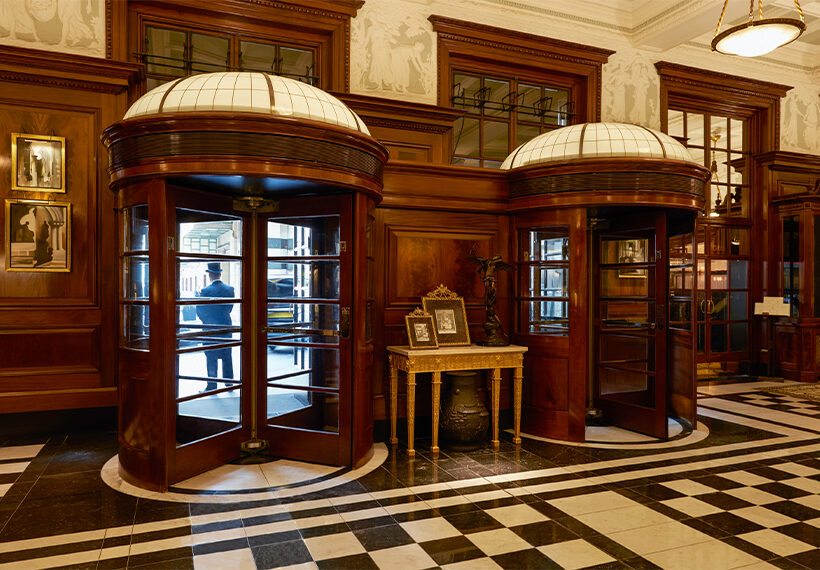
Day 1
Art, shopping, and a little “Bibbidi-Bobbidi-Boo”
Waking up at The Savoy hotel, I can’t help but feel weird. Not because the hotel itself is weird—it’s fantastic!—but because London was home for three years. It’s where I met my fiancé, Matt, but I’m back in the States temporarily, meaning we’ve had to do long-distance and settle for frequent visits. For this trip across the pond, I’ve decided to make a vacation out of it and show Matt, a longtime Londoner, the many places on my ideal itinerary. After all, isn’t experiencing the world from your partner’s perspective good for a relationship?
After a breakfast of eggs royale under a stained-glass dome in the hotel’s Thames Foyer, we stroll along the river and stake a prime spot on the Millennium Bridge to savor St. Paul’s Cathedral’s English Baroque extravagance. Across the bridge stands the former power station that’s now the Tate Modern, our first stop of the day. We’re here to commune with Mark Rothko, specifically his Seagram Murals. The pieces were commissioned in 1958 for the Four Seasons restaurant—birthplace of the “power lunch”—in Manhattan’s Seagram skyscraper. Ever the iconoclast, Rothko painted dismal color fields as a middle finger to the masters of the universe who dined there. After actually lunching there, though, he pulled the paintings, later gifting them to the Tate. Many of his works feature happy hues that inspire spiritual ecstasy in his fans, but these pieces pulsate sepulchral warnings in shades of dried blood and withered eggplant: Time is short. I love them, but Matt’s not impressed. “Rothko really redefined the rectangle here,” he jokes. We won’t agree on everything, I think, and I grab his hand as we walk to Bankside Pier to hop a riverboat.
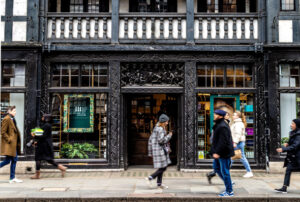
I’m convinced the London skyline is best appreciated from the water. Heading southwest on the Thames, we pass the Houses of Parliament, with Westminster Abbey’s dual towers rising behind. Big Ben’s clock face is visible, but the rest is still clad in scaffolding as part of a five-year refurbishment. (It’s due to ring again this summer.) The London Eye looms in its now iconic spot on the South Bank.
We alight at Millbank Millennium Pier and cross the street to the Tate Britain to see the reason Rothko donated his work to the institution. J.M.W. Turner was a forefather of Abstract Expressionism and a favorite of Rothko’s, as the Romantic painter’s late works went from classical landscapes to splashes of hues akin to color fields—as if “painted with tinted steam,” the artist John Constable said of his rival’s work. We take turns in front of The Decline of the Carthaginian Empire and Norham Castle, Sunrise, both of which center on the sun. Although they were painted almost 30 years apart (1817 and circa 1845, respectively), the effect of each is the same: mesmerizing. Even Matt is awed.
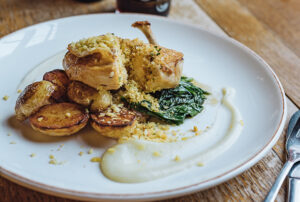
From here, we hop a cab to Belgravia for lunch at The Star Tavern, which has been around since Turner was painting; today, its cobbled mews looks out of place amid the surrounding whitewashed multimillion-pound houses. During Victorian times, the pub catered to the domestic staff of the upper crust, so it’s apropos that a group of working stiffs planned the biggest heist of the 20th century here. In the early 1960s, 15 men orchestrated the hijacking of a mail train and ultimately made off with the present-day equivalent of more than $60 million, in what was dubbed the Great Train Robbery. The only thing I want to steal, though, is The Star’s recipe for its sticky toffee pudding, which we devour after sharing a colossal plate of beer-battered haddock with thick, triple-cooked chips.
Matt has some work to do this afternoon, but I happily console myself with some shopping. London is a hotbed for groundbreaking designers of color, and a wave of creatives with South Asian heritage has recently been putting its stamp on the fashion scene. I walk to Browns in Mayfair to check out pieces by menswear designer Priya Ahluwalia, a born-and-bred Londoner of Nigerian and Indian descent who won the prestigious LVMH Prize last year. I spot brightly patchworked sweatpants made from recycled Indian fabrics and lined with fleece. Genius. Next, I move on to Indian-British designer Supriya Lele, who recontextualizes Indian aesthetics into asymmetric, semi-sheer ribbon dresses that cling like Western versions of Bollywood’s infamous wet saris. (A red-hot number I try on does indulge my inner starlet.)
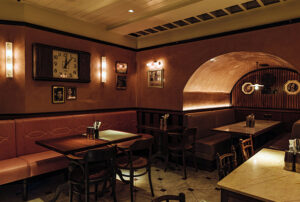
A short distance away is Liberty London, where I peruse works by the jewelry brand Alighieri, the brainchild of Rosh Mahtani, who was born in London to Indian parents and raised partially in Zambia. Enamored with Dante’s Divine Comedy while studying literature at Oxford, she translated the poem into roughly sculpted, raw-edged, gold-plated, stunning bijoux. I make a vow to come again, with Matt, and drop unsubtle hints.
All this coveting makes me crave real sustenance. I make my way to Dishoom, in nearby Covent Garden, where Matt joins me for dinner. The restaurant debuted 11 years ago in this recently renovated space, and now has eight locations around Britain. Behind its success are interiors that seem lifted from Bombay Talkies film sets but are actually inspired by mid-century Irani cafés in Bombay—think rattan chairs, marble tables, and original café rules that warn “no flirting with cashier.” The food, meanwhile, is finger-licking-good Indian cuisine. We scoop black dal, cooked for 24 hours to achieve its silky texture, onto gossamer-fine roti and drench basmati rice with Chicken Ruby, a tomato-based curry. We somehow have room for gulab jamun, a juicy fried dough ball soaked in cardamom-and-rose water–flavored sugar syrup. To sum up: I order the Dishoom cookbook.
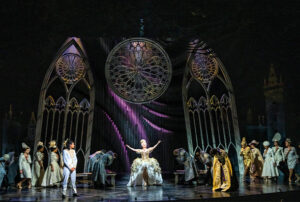
After magic on the plate, we’re ready for some magic onstage. It’s a quick walk to the Gillian Lynne Theatre in Soho, where we have tickets to see Andrew Lloyd Webber’s latest show, Cinderella. With a book by Emerald Fennell, who won a screenwriting Oscar for her film Promising Young Woman, the show turns the fairy tale on its head, thanks to a sassy twist featuring a hyper-masculine Prince Charming, a goth Cinderella, and her sensitive friend-turned-love interest Prince Sebastian. The infectious music and sweeping dance numbers are an entertaining evocation of happily ever after.
Humming the show’s catchy theme song, “Bad Cinderella,” we head back to The Savoy for a nightcap at the moody Beaufort Bar. We continue our magic-themed evening with a round of Merlin’s Madness cocktails, made with Grey Goose, Cynar, peach, rooibos tea, and lemon. (I was keen to check out the American Bar, Britain’s longest-surviving cocktail bar, but it’s temporarily closed.) Drinks drained, we retire to our suite, where I sink into a claw-foot tub filled with enough bubbles to put out the Great Fire of London.
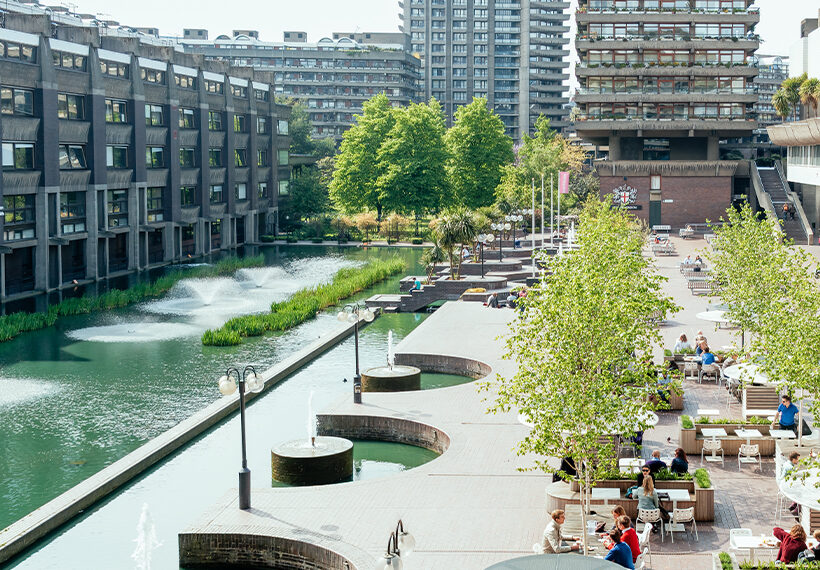
Day 2
A historical walk, a Syrian lunch, and a visit to the Barbican
We wake up early and, after quick showers, drop our bags at NoMad London, in Covent Garden. It’s not yet 9 when we join the line outside E Pellicci, London’s oldest family-owned café, or “caff,” as people call it here. Italian immigrant Priamo Pellicci founded it in 1900, and hearty Italian meals and English breakfast classics are still the Grade II–listed greasy spoon’s bread and butter. Most tables are configured as four-tops in the compact space, and, after a short wait, we pack in next to two college students. It’s impossible not to eavesdrop.
“I don’t understand,” one asks. “Why doesn’t anyone like Magnus?”
“They don’t get his jokes.”
We ponder the cracks Magnus makes to earn his peers’ enmity as we tuck into our breakfast—scrambled eggs and salmon for me and a full English for Matt. Word to the wise: Come very hungry.
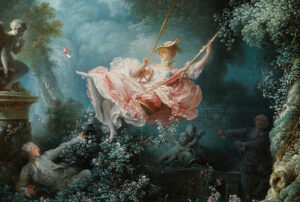
We attempt to walk off a few calories before hopping the tube to tony Marylebone, where we get our art fix at The Wallace Collection. The Georgian mansion was home to Sir Richard Wallace, whose art collection in 1897 became the largest gift ever bequeathed to Great Britain. The most famous piece is The Swing, a thinly veiled, candy-colored celebration of hedonism. As the story goes, a French aristocrat desired a portrait of his mistress depicted mid-swing, pushed by her husband as her semiconcealed lover watches from below. Another painter declined on moral grounds, but Jean-Honoré Fragonard accepted the commission. Thanks to a recent deep clean, the leading lady’s eyes look more mischievous than ever.
It’s pouring rain when we leave, but our next destination, Daunt Books, is just a few minutes’ umbrella-less power walk away. In 1990, this store took over a custom-built Edwardian bookshop with a skylight above a two-story atrium and long oak galleries.
Founder James Daunt categorized books by country rather than genre, which made the store a quick success; in 2019, he became CEO of Barnes & Noble. We browse the stacks while the rain patters on the glass ceiling. Matt picks up a biography of Cleopatra, while I grab Daughter of Empire by Lady Pamela Hicks, the daughter of Lord Louis Mountbatten, the last viceroy of India.
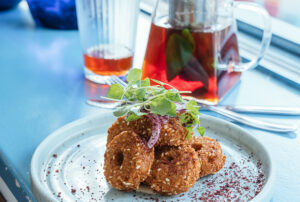
Daunt totes in hand, we walk to Carnaby Street for lunch at Imad’s Syrian Kitchen. Imad Alarnab’s multiple Damascus restaurants were all destroyed within six days during the Syrian civil war, and soon after he fled, finding asylum in London in 2015. He worked events and pop-ups until he was able to open this spot last year, with the help of a crowdfunding campaign. We dig into a zesty arugula and watermelon salad with za’atar-sprinkled shredded Halloumi. I’m surprised when the falafel arrives: It’s a flat disk with a hole in the middle. Alarnab explains that while most of the dishes here are Europeanized, this is the only one he would never change. “In Syria, the recipe is sacred,” he says. “The way we prepare it in the restaurant is exactly the same as I would at home.” After tasting its piquant crunch, I’m sold, and it’s even more delicious because I know that Alarnab donates £1 from each meal to a refugee charity, Choose Love. “My success reminds me of how lucky I am, and how London is the greatest city in the world, full of opportunity,” Alarnab says. “Even though we are here, I still can’t believe it.”
Matt has to head off, and I have a date with history expert Ian Stone for a tour of the two square miles that constitute the original City of London, founded as the settlement of Londinium after the Roman invasion of 43 CE. The peculiarly styled Guildhall, with its Hindu-Gothic facade that dates to the 1780s, serves as seat of governance for the City, which has its own mayor and police force. We meet outside the Tower of London, where a 13th-century menagerie under Henry III housed a polar bear that fished in the Thames. “A few years later, Londoners suggested Queen Eleanor might try fishing in the Thames herself, when they pelted her barge with stones, rotten vegetables, and filth from London Bridge,” Stone says of Henry’s wife, who tried to flee to Windsor via barge while the king hid in the Tower during an uprising. “Not every queen was as popular as the current Queen Elizabeth II.”
We admire London’s oldest church, All Hallows by the Tower, which claims to go all the way back to 675 CE, and move on to St. Dunstan-in-the-East. The latter was destroyed during the Great Fire of London in 1666, rebuilt by Sir Christopher Wren, and destroyed again during the Blitz; it has since been left as a dreamy garden, with its surviving Gothic arches covered in ivy. We come to a partial Roman wall at the City’s border. “London has never been taken by siege, usually because its citizens let the besiegers in,” Stone says. Given the City’s nearly 2,000-year history of self-preservation, its motto, “Lord, direct us,” seems to be working.
I say goodbye to Stone and direct myself 15 minutes north to the Barbican, where I find Matt waiting. The Brutalist masterpiece houses a concert hall, theater, art gallery, library, and many bars and restaurants. Skyways connect apartments that overlook a waterfall-edged lake.
Forget London—if one is tired of the Barbican, one is tired of life. We pop into a sound installation by Mumbai-based artist Shilpa Gupta that features recordings of verses by 100 poets incarcerated for their beliefs, and then move to the lakeside terrace, where bubbling fountains serve as background music for our discussion of the exhibit.
Dinner tonight is at the buzzy Sessions Arts Club in Clerkenwell. Set in an 18th-century courthouse, the restaurant exudes dilapidated glamour: artfully distressed plaster walls, crystal chandeliers, a working fireplace that lends the space a cinematic glow. Head chef and culinary darling Florence Knight’s Pan-European menu may look simple on paper, but it’s revelatory. Sea bream submerged in sorrel and fig leaf oil is so good we request more bread to lap up the sauce. We can’t differentiate between squid and squid-shaped pasta in a toothsome tomato sauce until we bite in—and it’s mind-bending.
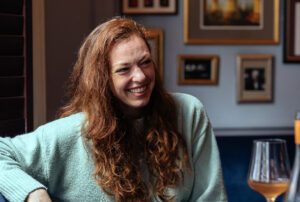
We end the night in Soho, at the thumb-size Mulwray, a wine bar tucked above an 18th-century pub. Affable American sommelier Sarah Wright ushers us to a velvet banquette and leads us through a flight. Our favorite wine is a Slovakian orange, but the most interesting one is a Tuscan Canaiolo. “If you were to take pizza and distill it into a wine, this is the wine you’d get,” Wright says. Matt and I exchange skeptical looks, but we’re astonished by the flavor. Still, we revert to the orange when it’s time to toast to a day well-spent.
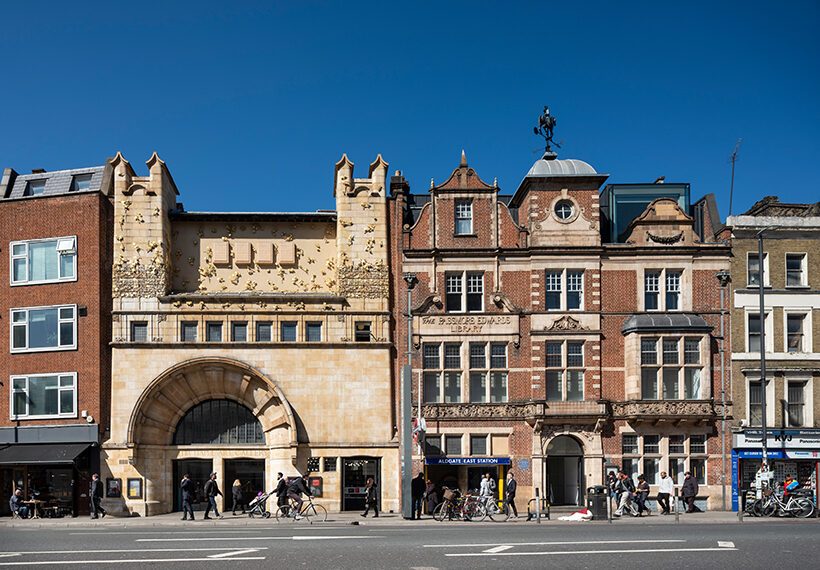
Day 3
Beautiful roses, a bagel bake-off, and a canal tour
I open the curtains of our room at the NoMad and marvel at the Royal Opera House, mere yards from the window. There’s no time to queue up La Traviata on my phone, though: Breakfast calls. We hail a taxi to Laxeiro in Hackney, which Galicia native Isabel Ríos founded in 1982 as a place to serve home-cooked Spanish meals and bocadillos. “I hope you like bread,” the waitress says as she presents massive baguettes stuffed with ham and tomato, tortilla española, and aioli— all of it simple and sublime.
Neither of us finish, but it’s not for lack of trying.
Outside, the Columbia Road Flower Market is in full swing. Gladiatorial buyers grab chrysanthemums, daffodils, and succulents, while tourists photograph the prismatic stalls. Vendors yell offers, seeking to outsell each other.
“Any bunch for a fiver!”
“Spend a tenner and I give you a gift!”
I’m desperate to buy a bunch of fuchsia-colored roses but realize it doesn’t make sense to tote them around all day, so I settle for a single stem, which I tuck into my bag.
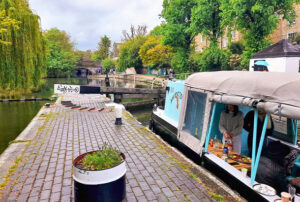
Next on the docket is the Whitechapel Gallery. Founded in 1901 in Whitechapel—Jack the Ripper territory—the gallery aimed to bring great art to working-class East Londoners. It hosted the British debut of Picasso’s Guernica and presented Jackson Pollock’s first major show in the country. One of today’s exhibits is a participatory piece by Yoko Ono that invites visitors to mend broken dishware with glue and twine. It’s an interpretation of Japanese kintsugi, an art form in which broken pottery is repaired using lacquer mixed with precious metals to highlight the beauty of the break. I’m tempted to partake, but the queue is moving at a glacial pace. My impatience is just the type of flaw Ono would have us spotlight, but all the same we move on.
Something more my speed is the nearby Spitalfields Market. The 17th-century bazaar originally housed fruit and vegetable stalls, but now the wares encompass antiques, clothing, and furniture. I whirl between stalls, trying on a Technicolor sari upcycled into a dressing gown and a handmade canary yellow bag. (Gray London skies bring out the color lover in me.) “Is this vintage?” I ask about a faux-emerald necklace with an ornate diamanté clasp. “Well, if you consider early ’90s vintage,” the owner replies. Ouch. I’m sure Gen Z does. I haggle it down by £10.
Next we stroll to Brick Lane to enjoy London’s most famous bagels—and its most delicious rivalry. Now known as the U.K.’s curry capital, Brick Lane was once a Jewish enclave. Beigel Shop, aka the Yellow One for its sunny signage, dates to 1855 and claims to be Britain’s “First & Best Beigel Shop.” Two doors down, Beigel Bake, aka the White One for its signage, set up shop in the 1970s. Taste-test time: I head to the Yellow One, Matt to the White One, and we both order thick salt-beef bagel sandwiches with mustard. Perhaps it’s the cut of beef Matt got, but we both agree that his is tastier. It’s close, but the White One wins this round.
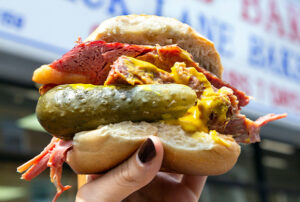
Matt volunteers to move our bags to tonight’s hotel, the Mondrian Shoreditch, while I hail a taxi to Hackney’s trendy Broadway Market. I stop for a personalized pick-me-up at Japanese coffee chain % Arabica, where guests choose from a selection of green coffee beans. I tell the barista I prefer weak coffee—a fact that always baffles baristas. Unfazed, she recommends an appropriate bean, which she scoops into a small-batch roasting machine. Out comes my perfectly calibrated latte.
Reenergized, I walk to Regent’s Canal for a tour with Bow Boat Company. A turquoise barge carrying owner Hazel Saunders glides into view. Saunders, looking the part in a straw boater, grew up in Camden Town and as a young woman volunteered for a waterways charity, The Pirate Castle. “I got hooked on canals straightaway,” she says. In 2009 she bought and refurbished this barge, and she has since helmed tours around the city’s waterways. “Britain’s canals were built in the mid–18th century to move freight pulled by horses along towpaths,” she explains. “But rail transport changed all that.” In the 1950s, the government proposed filling in more than half of London’s canals to make roads, but volunteer groups fought the measure. Now, the once-polluted waterways thrive environmentally and are sought-after oases for living and leisure.
We float past Hackney Wick’s graffitied warehouses (many of them now converted into bars) and through a lock; drift along De Beauvoir Town, a yuppie enclave popular with celebs like Alexa Chung and Kit Harrington; and pass through the Islington Tunnel and into houseboat-lined Battlebridge Basin. An estimated 10,000 people live on boats in London, Saunders tells me. “People see it as a cheap option, because housing in London is so expensive.”
We reach Coal Drops Yard, a Victorian-era coal depot that’s now an upscale open-air shopping center next to Kings Cross train station. I bid Saunders adieu and meet Matt for a drink at Spiritland, a restaurant-cum-recording studio that transforms into a bustling bar with DJ sets at night. Toffee-hued wood paneling and Kermit-green chairs suggest a snazzy 1970s basement, and the music, though booming, allows comfortable levels of conversation. A pair starts to dance, but a server asks them to sit; apparently it’s not that kind of party. Whiskeys in hand, we bop along to the disco remixes but remain seated.
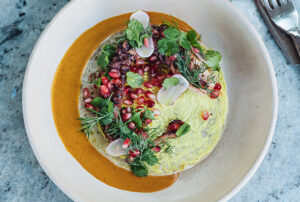
Next, we cross a fountained square to Coal Office, co-created by Michelin-starred Israeli chef Assaf Granit and British furniture and lighting designer Tom Dixon. Sculptural pendants and sand-marble tabletops serve as the seductive backdrop for globally accented Middle Eastern dishes, such as grilled octopus atop a Yemeni pancake pillowed with pomegranate seeds and blanketed with a smoky, spicy truffle-harissa sauce. When we can’t decide on dessert, head chef Nitai Shevach sends over cacao-tonka shortbread tented with dark chocolate wedges and hazelnut ice cream with milk chocolate feuilletine. It tastes, according to our server, “like a fling between a Ferrero Rocher and a Kinder Bueno.”
Full and exhausted, we call it a night and head to the Mondrian Shoreditch. The glam-rock grunge of the neighborhood, with its graffitied rooftops and brick warehouses rebirthed into trendy apartments and bars, is in full view from our suite’s terrace. Amid the neon landscape, the steeple of the 18th-century St. Leonard’s Church gleams white like a totemic beacon. We talk about our future. Lucky for me, it looks like London will be home again.
London Calling: With 22 daily flights to London, including a brand-new direct flight from Boston, hopping across the pond has never been easier.
Next Up: Three Perfect Days: Greece
